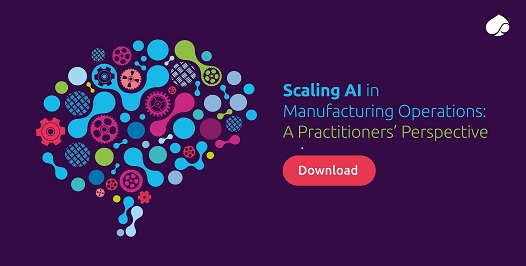How manufacturing operations transformation combines machine data with machine learning.
Blog: Capgemini CTO Blog
Manufacturing enterprises have been focused on the operational transformation pillar which in almost all cases refers to making supply chain and manufacturing operations more efficient by leveraging capabilities arising out of IoT, IIoT, and AI. The visionaries in Manufacturing however have also concentrated on transforming their business models from a sell model to an as-a-Service model. Operational transformation in this case Manufacturers have a lot going in their favor for this transformation. Most plants are well instrumented and already provide process parameters, decisions around manufacturing processes are data-driven and technology such as IIoT, advances in security and 5G promise to make this transformation real. Also, the hype and focus on IT-OT integration and Industry 4.0 has made businesses very aware of the possibilities and benefits of operational transformation.
Yet we see that the adoption rate of these technologies isn’t up to expectations and many organizations are either avoiding investments in operational transformation or are unable to move go beyond pilot initiatives. Sure, there are challenges – technology can still be an inhibitor, data can be siloed, and experience in large scale transformations is scarce. However in our experience, building the right business case for operational transformation provides enough incentive to overcome many of the typical challenges. Let’s look at this in more detail.
We have observed that predictive maintenance is the number-one use case as far as operations transformation is concerned and it is proven to improve OEE and maintenance cost– but implementing this usecase in isolation makes the approach tactical and stunts ROI.
For the cliché of data being the new oil to come true we need take a longer-term strategic view that strings together multiple use cases, with the preceding use case providing the foundation for the next set of business capabilities. Hence, predictive maintenance can become a starting point and it can be deployed on key assets before being scaled across multiple critical assets and sites. When this scale-up is complete, organizations go from optimizing locally (think work center) to potentially optimizing across the value chain from a predictive maintenance standpoint. Now this initiative also becomes the foundation for other critical initiatives like automated root cause analysis. As an extension alayer of capability needs to be placed on this solution to predict quality.
As an example a steel sheet supplier to the auto industry can use vibration analysis of roll stands in the rolling mill to not only carry out predictive maintenance (of the roll stands) but also to predict final product quality. This output, when combined with additional capabilities such as image analysis of finished steel sheets, clearly establishes superior product quality.
For industries dealing with variation in raw material characteristics, the next step is to build capability in process optimization. This step combines simulation capabilities and techniques with the above mentioned solutions to arrive at optimal run scenarios for different assets while also becoming the foundation for machines and assets to become truly autonomous.
We used this phased, stringing-together approach with an industrial gas supplier to deliver ongoing and incremental value and ensuring that operations transformation they are looking for is delivered. This agile approach to transformation ensures that change is sustainable and adoption is significantly higher.
To succeed in operational transformation organizations must take a strategic view of their data and envisage the various possibilities in leveraging this data. Capgemini’s Scaling AI in manufacturing operations report is a key resource for executives working on operational transformation as it identifies key use cases while detailing the experiences other manufacturers have had implementing them.
Chiranth Ramaswamy, Senior Director can be contacted here
Leave a Comment
You must be logged in to post a comment.








